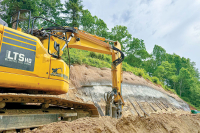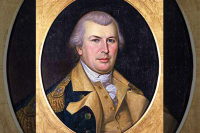Common ash tree deserves more attention
 “How many thousand-thousand of untold white ash trees are the respected companions of our doorways, kindliest trees in the clearing beyond the cabin? No one can say. But this is a tree whose grave and lofty character makes it a lifelong friend.
“How many thousand-thousand of untold white ash trees are the respected companions of our doorways, kindliest trees in the clearing beyond the cabin? No one can say. But this is a tree whose grave and lofty character makes it a lifelong friend.
White ash has no easy, pretty charms like dogwood and redbud; it makes no over-dramatic gestures like weeping willow and Lombardy poplar. It has never been seen through sentimental eyes, like the elm and the white birch. Strong, tall, cleanly, benignant, the ash tree with self-respecting surety waits, until you have sufficiently admired all the more obvious beauties of the forest, for you to discover at last its unadorned greatness.”
— Donald Culross Peattie, A Natural History of Trees
It’s generally overlooked, but I think ash is a pretty tree, especially when it’s fruiting. The winged seeds that appear in dense clusters on the branches below the leaves are called samaras (SAM-a-ras).
Here in Western North Carolina there are three ash species: white ash (Fraxinus americana), green ash (F. pennsylvanica), and pumpkin ash (F. profunda). White ash — and its variant forms — is by far the most common species. The undersides of the leaves are whitish.
Like a maple seed — which is also winged — ash seeds catch the wind as they fall. The wing provides aerodynamic lift that slows the rate of fall and spins the wing around the seed’s fruiting head like a propeller. Having taken flight in a spiral descent, the seed is deposited away from the shadow of the parent tree, where it stands a better chance of flourishing on its own.
Related Items
Ash trees are also famous for providing aerodynamic lift of another sort. When Babe Ruth hit his 60th home run, he did it with a bat made from white ash. Ditto Roger Maris when he hit his asterisk-marked 61st homer. Ditto Hank Aaron when he poleaxed number 755. Until the aluminum bats now favored in the college ranks are approved for use in the major leagues, white ash will remain the bat of choice.
Like hickory, ash wood is strong, but it’s lighter and provides greater shock resistance. It’s the wood of choice for use in most sporting equipment and many tools: bats, oars, paddles, rackets, bowling alleys, shovels, hoes, rakes, etc.
Some ash trees have bisexual flowers, but most are either separate male or female trees, like holly and ginko. Since some lazy folks don’t like to clean up ash seeds in the fall, male cultivars have been developed that entirely eliminate the problem (these include “Autumn Purple” and “Rosehill”). Personally, I’d rather have a seed-littered yard with contented male and female ash trees than a pristine yard full of lonely males.
Of a summer afternoon when the wind begins moving in the trees, the whitish gray undersides of the ash leaves are slowly exposed. From a distance, they seem to be saying, “Rain is coming.” Before long the first drops begin to fall.
(George Ellison is a naturalist and writer. He can be reached at This email address is being protected from spambots. You need JavaScript enabled to view it..)









